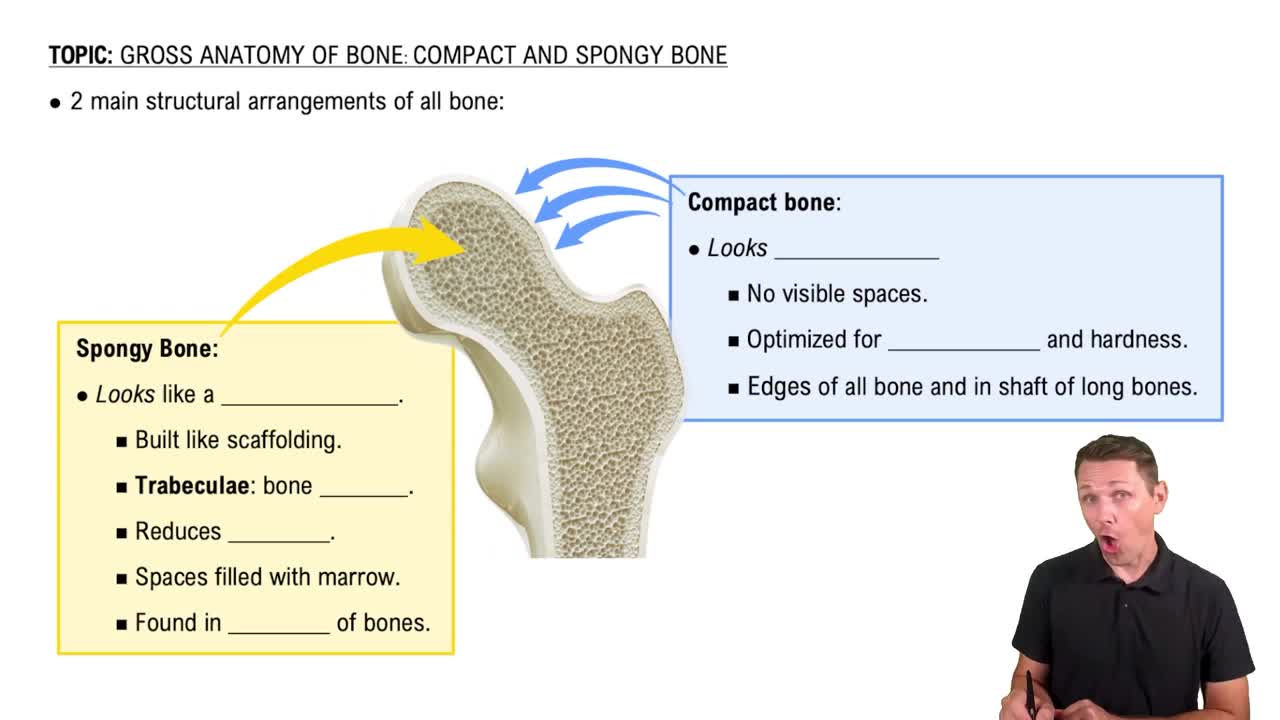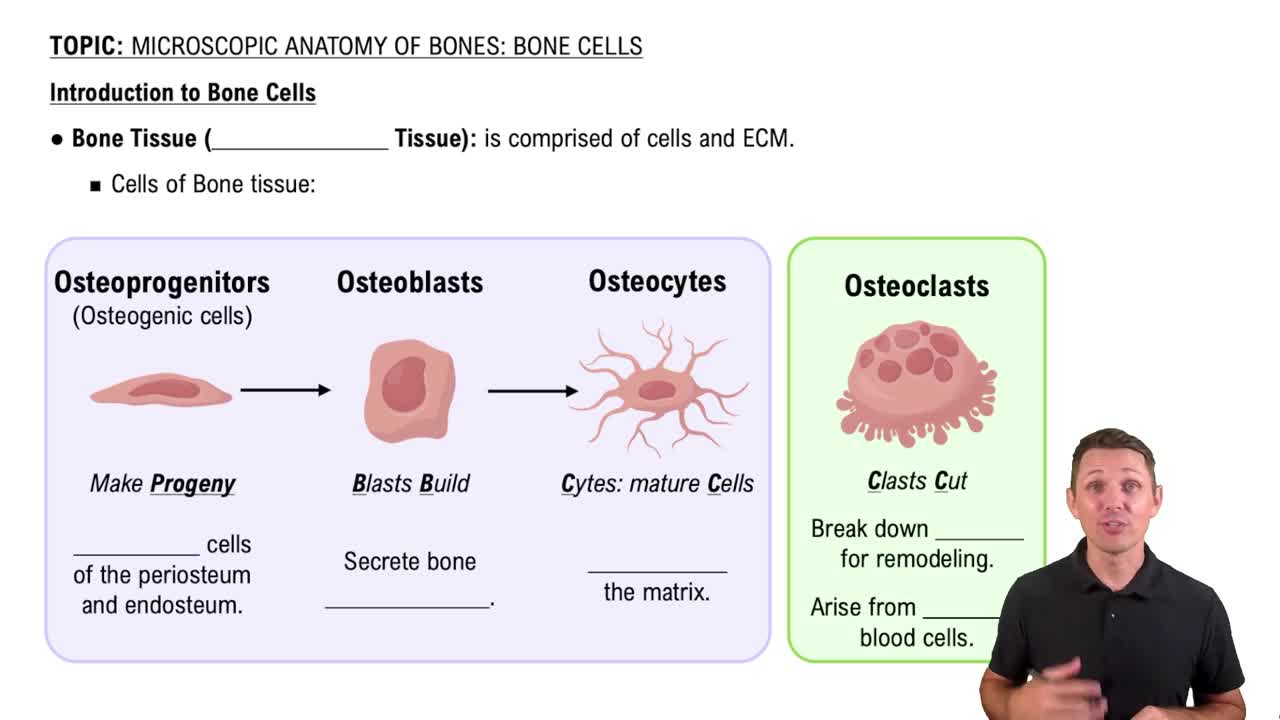Here are the essential concepts you must grasp in order to answer the question correctly.
Spongy Bone Structure
Spongy bone, also known as cancellous bone, is a type of bone tissue characterized by a porous, lattice-like structure. This structure provides strength while minimizing weight, making it essential for supporting the body's framework. The spaces within spongy bone are filled with bone marrow, which is crucial for blood cell production.
Recommended video:
Trabeculae
Trabeculae are the small, rod-like or plate-like structures that form the framework of spongy bone. They create a network that supports the bone's overall structure and helps distribute stress and strain during weight-bearing activities. Trabeculae are essential for maintaining the integrity and functionality of spongy bone.
Recommended video:
Bone Cells
Bone tissue is maintained by various types of cells, including osteoblasts, osteocytes, and osteoclasts. Osteoblasts are responsible for bone formation, osteocytes maintain bone tissue, and osteoclasts are involved in bone resorption. Understanding these cells is crucial for comprehending how bones grow, repair, and adapt to stress.
Recommended video:
Introduction to Bone Cells






